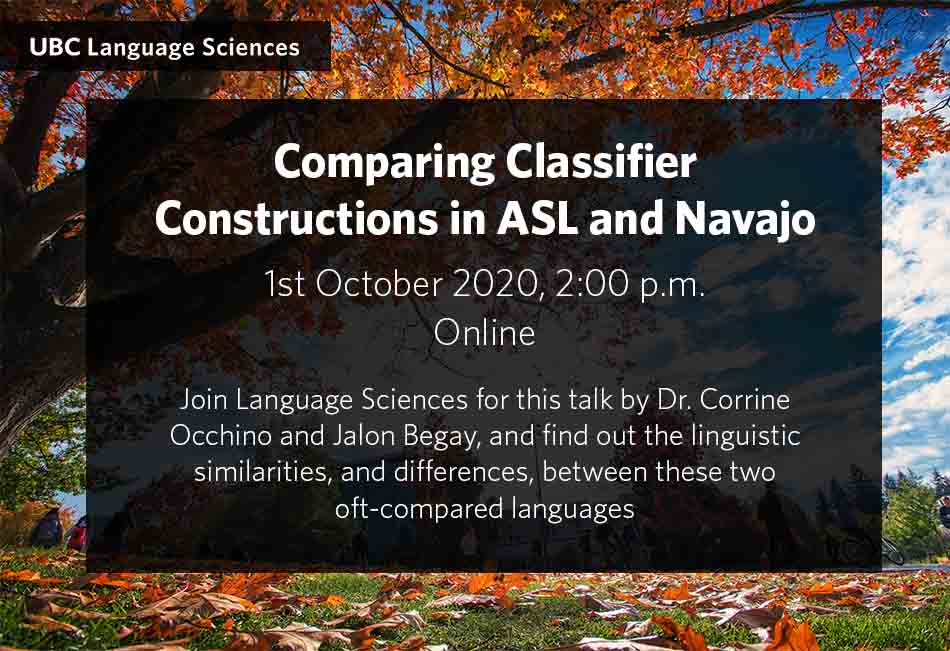Language Science Talks: 'Comparing Classifier Constructions in ASL and Navajo', Dr. Corrine Occhino and Jalon Begay (rescheduled)
October 1, 2020, 2:00 pm to 4:00 pm
Join us as Dr. Corrine Occhino, Research Assistant Professor at the Center on Cogniton and Language, Rochester Institute of Technology, and Jalon Begay, PhD student in the Department of Linguistics, University of New Mexico, present this talk.
Introduction by Language, Sustainability, and Transnationalism Research Lead and Assistant Professor in Critical Indigenous Studies/Anthropology Daisy Rosenblum. ASL interpreters will be present for this event.
Abstract:
Among the world’s languages, American Sign Language (ASL) and Navajo are often mentioned jointly in discussions on classifier systems, since both languages have dedicated and obligatory encoding of themes in ditransitive constructions, also referred to as ‘handling verbs’ (Young 2000: 2). Comparisons between ASL and Navajo, however, are often based on broad theoretical claims and opportunistic methodologies (cf. Baker and Croft 2017), rather than on intimate knowledge of the grammars and the language-specific properties of each language.
For our talk, we first discuss the beginnings of the comparisons in typologically-oriented papers (e.g. Supalla 1978; cf. Allan 1977), and then review recent literature in which both languages are comparatively examined (e.g. Fernald and Napoli 2000b; cf. Fernald and Napoli 2000a: 20, fn. 20).
We then argue how these classificatory systems are alike and whether they are formally or functionally comparable in terms of the language-specific phonology, morphology, and morphosyntax. Specifically, while the cognitive motivations behind ontological categories and the specific predicate types which classify objects maybe similar, we argue that differences in modality and the implementation of formal properties prove these languages to be quite different as well.
